While everyone's goals are different, having a toned and muscular back is something many women strive to achieve. Focusing on muscles in the back to workout is the best way to improve your overall strength, posture, and achieve that toned, sculpted look.
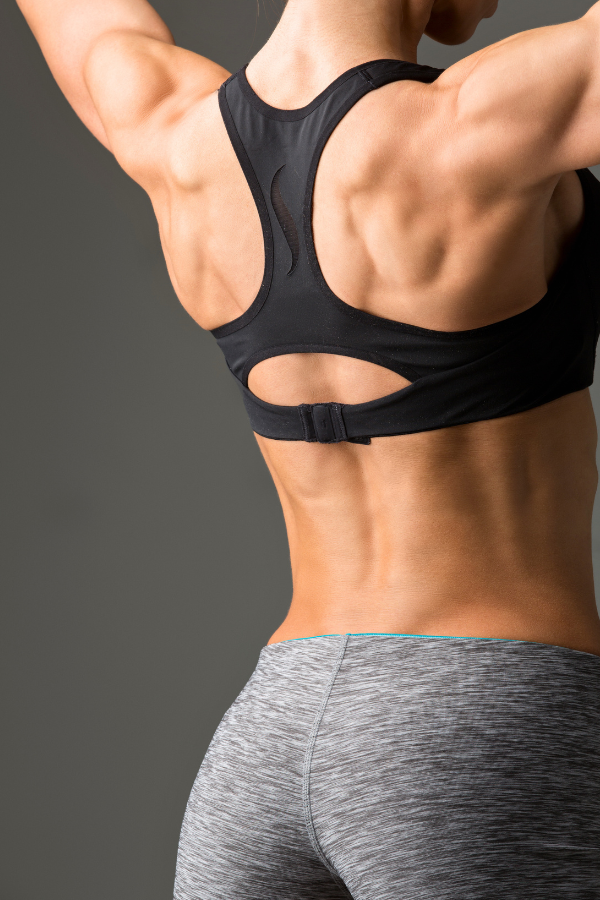
If you're new to the gym or looking to level up your back workouts, I've got your covered!
Today we're diving into a comprehensive guide to chisel those back muscles to have you feeling your best in tank tops, sports bras, bikinis and more.
Let’s get to it!
*Disclaimer: The suggestions provided in this blog post are for informational purposes only and should not be considered as a substitute for professional medical advice, diagnosis, or treatment. Always consult with a qualified healthcare provider before making any significant changes to your health and wellness routines. I am not a doctor and the information presented is based on research and personal experience. Individual results may vary, and any actions taken based on the information in this blog post are done at your own risk. It's essential to consult a healthcare expert for personalized guidance tailored to your specific health needs and circumstances. Your health and well-being should always be a top priority, and professional medical guidance is crucial for making informed decisions about your health.
Best Muscles in the Back to Workout for Women
You might be wondering why we as women should pay special attention to the muscles in the back.
A strong back not only enhances your overall appearance but also improves posture, reduces the risk of injury, and supports your entire body in various movements.
Plus, working on your back muscles can help balance out any muscle imbalances and give you a more symmetrical physique.
And yes, to my friends who want a "tiny waist".. this is how you get it!
Benefits of a Strong Back
Before we jump into the exercises, let's get familiar with the different muscles in the back to workout.
Understanding these muscles will help you target them more effectively during your workouts.
Major Back Muscles

Best Muscles in the Back to Workout for Beginners
Now that we're familiar with the back muscles, let's explore some of the best back exercises that will help you build a strong and sexy back.
These exercises are beginner-friendly and can be done at home or the gym.
Back Workouts at Home
You don’t need a gym membership to get a great back workout.
Here are some effective exercises you can do right at home with minimal equipment.
1. Bent-Over Row with Resistance Bands
Resistance bands are a fantastic tool for home workouts, allowing you to effectively target the back muscles.
How to do it:
- Stand with your feet shoulder-width apart, holding the resistance band handles.
- Bend your knees slightly and hinge at your hips, keeping your back straight.
- Pull the handles towards your torso, squeezing your shoulder blades together.
- Lower the bands back with control.
2. Superman
The Superman exercise targets the lower back and can be done without any equipment.
How to do it:
- Lie face down on a mat with your arms extended in front of you.
- Lift your arms, chest, and legs off the ground simultaneously.
- Hold for a few seconds, then lower back down.
3. Reverse Fly with Dumbbells (or makeshift weights!)
This exercise targets the rear deltoids and upper back muscles.
How to do it:
- Stand with your feet shoulder-width apart, holding a pair of dumbbells with a neutral grip.
- Bend your knees slightly and hinge at your hips.
- Raise the dumbbells out to the sides, keeping a slight bend in your elbows.
- Lower the weights back with control.
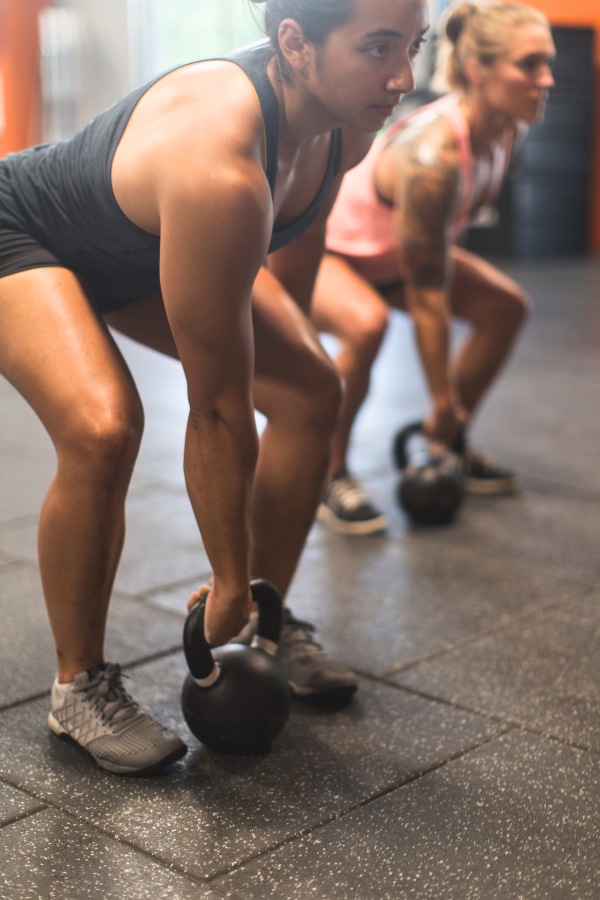
Full Back Workout at the Gym
For those who prefer the gym, here’s a comprehensive back day workout that targets all major muscles in the back to workout using gym machines and free weights.
This workout is suitable for everyone, including a tailored focus for women to build strength and definition without bulking up.
1. Lat Pulldown
The lat pulldown machine is excellent for isolating the lats and building that V-shape.
How to do it:
- Sit at the lat pulldown machine and grasp the bar with a wide grip.
- Pull the bar down towards your chest, keeping your elbows pointed down.
- Slowly return the bar to the top position.
2. Seated Cable Row
The seated cable row targets the middle back, including the rhomboids and traps.
How to do it:
- Sit at the cable row machine and grasp the handle with an overhand grip.
- Pull the handle towards your torso, squeezing your shoulder blades together.
- Slowly return to the starting position.
Recommended post:
The Ultimate Guide to Starting Strength Training as a Beginner
3. T-Bar Row
The T-bar row is great for engaging multiple back muscles, including the lats, traps, and rhomboids.
How to do it:
- Stand over a T-bar row machine and grasp the handles.
- Bend your knees slightly and hinge at your hips.
- Pull the handles towards your chest, squeezing your shoulder blades together.
- Lower the handles back down.
4. Face Pull
Face pulls are excellent for targeting the rear delts and upper traps.
How to do it:
- Attach a rope to a high pulley and grasp it with an overhand grip.
- Pull the rope towards your face, keeping your elbows high.
- Squeeze your shoulder blades together and hold for a second.
- Return to the starting position.
5. Bent-Over Dumbbell Row
This exercise is perfect for targeting the lats and rhomboids.
How to do it:
- Stand with your feet shoulder-width apart, holding a pair of dumbbells with an overhand grip.
- Bend your knees slightly and hinge at your hips, keeping your back straight.
- Pull the dumbbells towards your torso, squeezing your shoulder blades together.
- Lower the weights back with control.
6. Reverse Fly with Lighter Weights
Using lighter weights allows you to focus on form and muscle engagement.
It's also very easy to hurt your rotator cuff by going too heavy with these!
So be careful!
How to do it:
- Stand with your feet shoulder-width apart, holding a pair of light dumbbells with a neutral grip.
- Bend your knees slightly and hinge at your hips.
- Raise the dumbbells out to the sides, keeping a slight bend in your elbows.
- Lower the weights back with control.
7. Single-Arm Dumbbell Row
This exercise targets the upper back muscles and is great for improving muscle symmetry.
How to do it:
- Place your left knee and hand on a bench, holding a dumbbell in your right hand.
- Keep your back flat and row the dumbbell towards your hip, squeezing your shoulder blades.
- Lower the dumbbell back and repeat on the other side.
By combining these exercises, you can ensure a well-rounded back workout that targets all major back muscles.
Remember to maintain proper form, use a full range of motion, and gradually increase weights to continue challenging your muscles.

Creating a Balanced Back Workout Routine
Now that you know some of the best exercises for your back muscles, it's time to create a balanced back workout routine.
Here’s a sample routine you can follow:
Sample Back Workout Routine
Tips for Maximizing Your Back Workout
To get the best results from your back workouts, keep these tips in mind to effectively target the muscles in the back to workout and ensure optimal muscle growth and strength development.
1. Focus on Form
Proper form is crucial for targeting the right muscles and preventing injury.
Always engage your core and avoid using momentum to lift the weights.
2. Use a Full Range of Motion
Ensure you're using a full range of motion in each exercise to fully engage the muscles and promote muscle growth.
3. Incorporate Different Grips
Changing your grip (e.g., overhand, underhand, neutral) can help target different back muscles and add variety to your routine.
Recommended post:
How to Maximize Fat Loss while Building Muscle
4. Gradually Increase Weight
As you get stronger, gradually increase the weight you're lifting to continue challenging your muscles and promoting growth.
5. Rest and Recover
Allow your muscles time to recover between workouts.
Aim for at least 48 hours of rest before working out the same muscle group again.
6. Stay Consistent
Consistency is key to seeing results.
Stick to your back workout routine and make it a regular part of your fitness regimen.

Overcoming Common Challenges
Low Back Pain
If you experience low back pain during or after your back workouts, it could be a sign of improper form or muscle imbalances.
Focus on strengthening your core and lower back muscles and consider consulting with a fitness professional.
Limited Equipment
No gym? No problem!
Many of these exercises can be modified to be done with minimal equipment, like resistance bands or body weight.
Lack of Motivation
Staying motivated can be tough, but remember your goals and the benefits of a strong back.
Find a workout buddy, mix up your routine, and celebrate your progress to keep yourself motivated.
Advanced Tips and Techniques for Back Workouts
Now that you’ve got the basics down, let’s dive into some advanced tips and techniques to further enhance your back workouts.
Whether you’re aiming to increase muscle mass, target specific areas, or simply add variety to your routine, these strategies will help you take your back training to the next level.
Advanced Exercises to Add to Your Back Routine
1. Barbell Row
The barbell row is a staple in many advanced back routines and is excellent for building muscle mass in the upper and mid-back.
How to do it:
- Stand with your feet shoulder-width apart, holding a barbell with an overhand grip.
- Bend your knees slightly and hinge at your hips.
- Pull the barbell towards your lower chest, squeezing your shoulder blades together.
- Lower the barbell back down with control.
2. Face Pull
Face pulls are great for targeting the rear delts and upper traps, helping to improve posture and shoulder stability.
How to do it:
- Attach a rope to a high pulley and grasp it with an overhand grip.
- Pull the rope towards your face, keeping your elbows high.
- Squeeze your shoulder blades together and hold for a second.
- Return to the starting position.
3. Deadlift
The deadlift is a powerful exercise that targets the entire posterior chain, including the back muscles.
It's great for building overall strength and muscle mass.
How to do it:
- Stand with your feet hip-width apart, with a barbell on the floor in front of you.
- Bend at your hips and knees to grasp the bar with an overhand grip.
- Lift the barbell by extending your hips and knees, keeping your back straight.
- Lower the barbell back to the floor with control.

Incorporating Resistance Bands
Resistance bands are a versatile tool that can add extra resistance and variety to your back workouts.
They’re perfect for targeting specific muscle groups and improving muscle activation.
1. Banded Lat Pulldown
Using a resistance band for lat pulldowns can help you target your lats more effectively, especially if you don't have access to a lat pulldown machine.
How to do it:
- Attach a resistance band to a high anchor point.
- Grasp the band with both hands and kneel down.
- Pull the band down towards your chest, mimicking the motion of a lat pulldown.
- Slowly return to the starting position.
2. Banded Row
The banded row is an excellent exercise for engaging the lats, rhomboids, and traps with a resistance band.
How to do it:
- Attach a resistance band to a low anchor point.
- Sit down and grasp the band with both hands.
- Pull the band towards your torso, squeezing your shoulder blades together.
- Return to the starting position.
Advanced Training Techniques
1. Drop Sets
Drop sets involve performing an exercise until failure, then reducing the weight and continuing the set.
This technique can help increase muscle hypertrophy and endurance.
How to do it:
- Perform a set of bent-over rows until you can’t do any more reps.
- Reduce the weight by 20-30% and continue rowing until failure.
- Repeat the process for an additional drop if desired.
2. Supersets
Supersets involve performing two exercises back-to-back with no rest in between.
This technique can help increase intensity and muscle engagement.
How to do it:
- Perform a set of lat pulldowns.
- Immediately follow with a set of reverse flies.
- Rest and repeat the superset for the desired number of sets.
3. Progressive Overload
Progressive overload is the principle of gradually increasing the stress placed on your muscles over time.
This can be achieved by increasing weight, reps, or intensity.
How to do it:
- Track your workouts and aim to increase the weight or reps each week.
- Focus on maintaining proper form while progressively challenging your muscles.
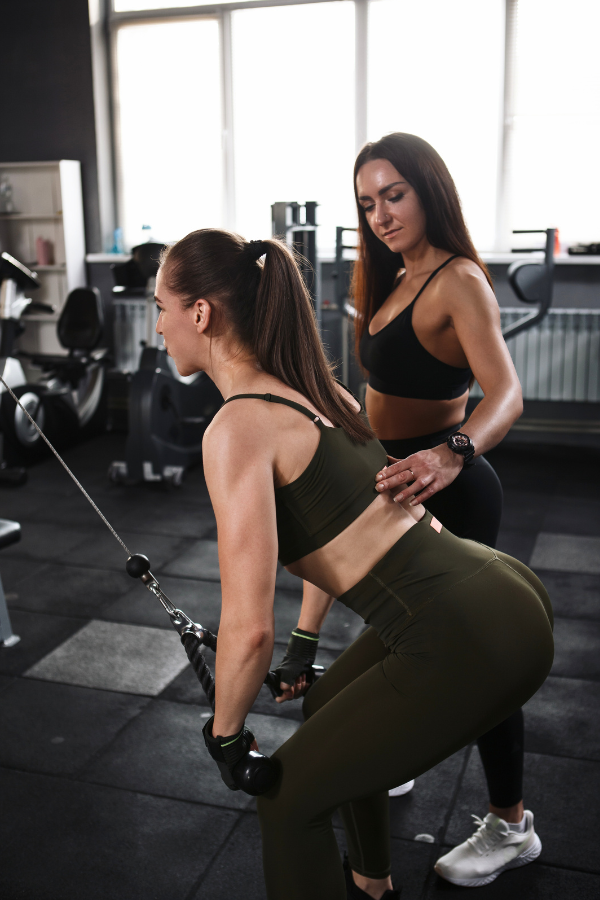
Incorporating Lower Back Focus
While most back exercises focus on the upper and mid-back, it’s essential not to neglect the lower back.
Strengthening the lower back can prevent injuries and support overall spinal health.
1. Hyperextensions
Hyperextensions target the lower back, glutes, and hamstrings.
How to do it:
- Lie face down on a hyperextension bench with your feet secured.
- Lower your upper body towards the floor, keeping your back straight.
- Raise your upper body back up, engaging your lower back muscles.
2. Good Mornings
Good mornings are a great exercise for targeting the lower back and hamstrings.
How to do it:
- Lie face down on a hyperextension bench with your feet secured.
- Lower your upper body towards the floor, keeping your back straight.
- Raise your upper body back up, engaging your lower back muscles.
Tracking Your Progress for Back Muscles
Keeping track of your progress is essential for staying motivated and seeing results.
Here are some tips for tracking your back workout progress:
Use a Workout Journal
Write down the exercises, weights, and reps you perform during each workout.
Take Progress Photos
Regularly take photos of your back to visually track your muscle development.
Measure Your Strength
Periodically test your strength on key exercises like the deadlift or pull-up to gauge improvement.
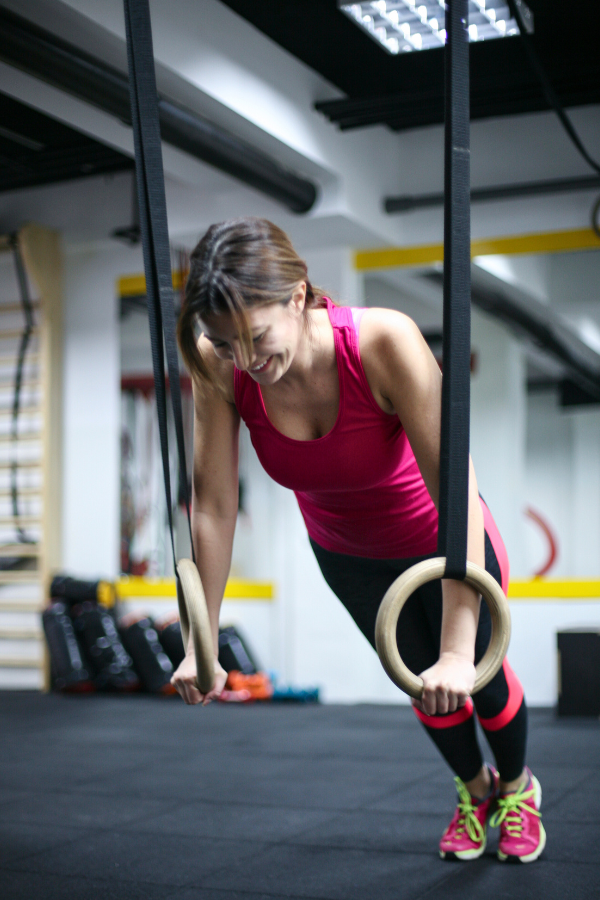
Importance of Nutrition for Back Muscle Growth
While workouts are crucial, nutrition plays an equally important role in building a strong back.
Here are some nutritional tips to support your muscle growth:
1. Protein Intake
Protein is essential for muscle repair and growth.
Aim for 1g per pound of goal body weight, including high-quality protein sources in your diet, such as lean meats, fish, eggs, dairy, legumes, and protein supplements if needed.
2. Carbohydrates for Energy
Carbohydrates provide the energy needed for intense workouts.
Include complex carbs like whole grains, fruits, and vegetables in your meals to fuel your training sessions.
Recommended post:
Gym Hacks: Time-Saving Workout Tips for Busy Women
3. Healthy Fats
Healthy fats support overall health and can aid in muscle recovery.
Include sources of healthy fats like avocados, nuts, seeds, and olive oil in your diet.
4. Hydration
Staying hydrated is crucial for optimal muscle function and recovery.
Aim to drink at least 8-10 glasses of water daily, and more if you're sweating heavily during workouts.
Use something like, hydracharge to help aid hydration. I use this DAILY!
 Kaged Electrolyte Hydration Powder - Pink Lemonade | Pre, Post, Intra Workout Supplement | 60 Servings
Kaged Electrolyte Hydration Powder - Pink Lemonade | Pre, Post, Intra Workout Supplement | 60 Servings
5. Post-Workout Nutrition
Consume a balanced meal or snack within 30-60 minutes after your workout to replenish glycogen stores and provide your muscles with the nutrients they need to recover and grow. A combination of protein and carbohydrates is ideal.
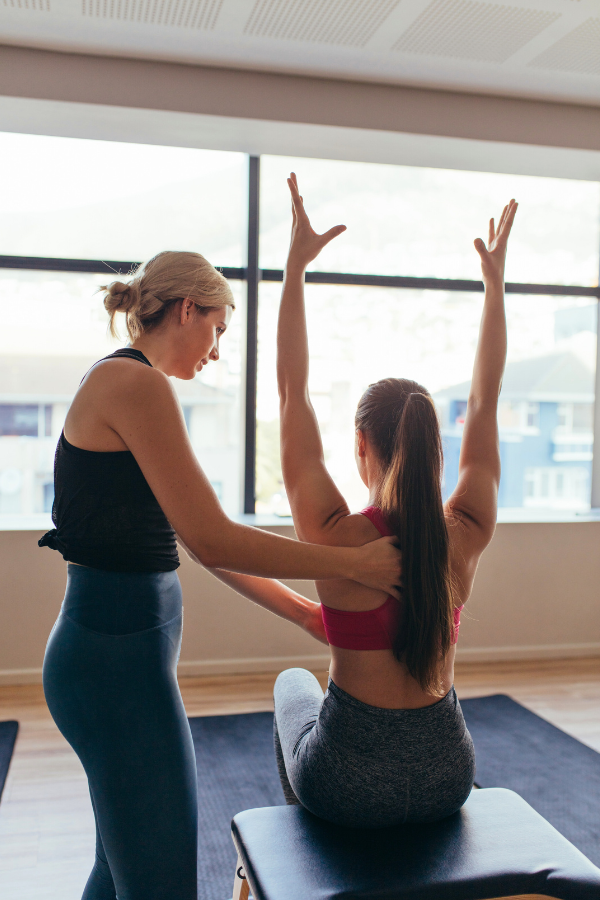
Importance of Stretching and Flexibility While Focusing on Muscles in the Back to Workout
In addition to strength training, incorporating stretching and flexibility exercises into your routine can help improve muscle function and prevent injuries.
Stretching Tips for Back Workouts
Dynamic Stretching Before Workouts
Perform dynamic stretches like arm circles, torso twists, and leg swings before your workout to warm up your muscles.
Static Stretching After Workouts
Incorporate static stretches like the child's pose, cat-cow stretch, and seated forward bend after your workout to improve flexibility and reduce muscle soreness.
Yoga for Flexibility
Practicing yoga can help improve overall flexibility and strength, including in the back muscles. Poses like downward dog, cobra, and bridge pose are particularly beneficial for the back.

Listening to Your Body While Focusing on Muscles in the Back to Workout
While pushing yourself is important, it’s equally crucial to listen to your body and recognize when it needs rest. Overtraining can lead to injuries and hinder your progress.
Signs You Need a Break
Persistent Muscle Soreness
If your muscles are sore for several days, it may be a sign that they need more time to recover. BCAAs help TREMENDOUSLY with muscle soreness. Especially DOMS (delayed onset muscle soreness)... ya know, the kind ya really feel 2 days after a workout?! Fool proof, try these BCAAs out and you'll be hooked.
 XTEND Sport BCAA Powder Blue Raspberry Ice - Electrolyte Powder for Recovery & Hydration with Amino Acids - 30 Servings
XTEND Sport BCAA Powder Blue Raspberry Ice - Electrolyte Powder for Recovery & Hydration with Amino Acids - 30 Servings
Fatigue
Feeling unusually tired or lacking energy during your workouts can indicate that your body needs rest.
Decreased Performance
If you notice a decline in your workout performance, it may be time to take a break and allow your body to recover.
Mental Burnout
Feeling unmotivated or dreading your workouts can be a sign of mental burnout. Don't let yourself get to this point. Taking a short break can help you come back refreshed and motivated.

Setting Realistic Goals for Obtaining Muscles in Your Back
Setting realistic and achievable goals is essential for staying motivated and tracking your progress. Read my blog post, How to Set SMART Fitness Goals to Maximze Your Results, here. In the meantime, here's some quick tips for goal setting:
Specific Goals
Define clear and specific goals, such as increasing your deadlift weight by 10 pounds or being able to do five pull-ups.
Measurable Goals
Ensure your goals are measurable so you can track your progress and celebrate your achievements.
Achievable Goals
Set goals that are challenging but attainable based on your current fitness level.
Relevant Goals
Focus on goals that are relevant to your overall fitness and health aspirations.
Time-Bound Goals
Set a timeframe for achieving your goals to keep yourself accountable and motivated.
Recommended post:
Breaking Stereotypes: Embracing Body Positivity in Your Workout Routine
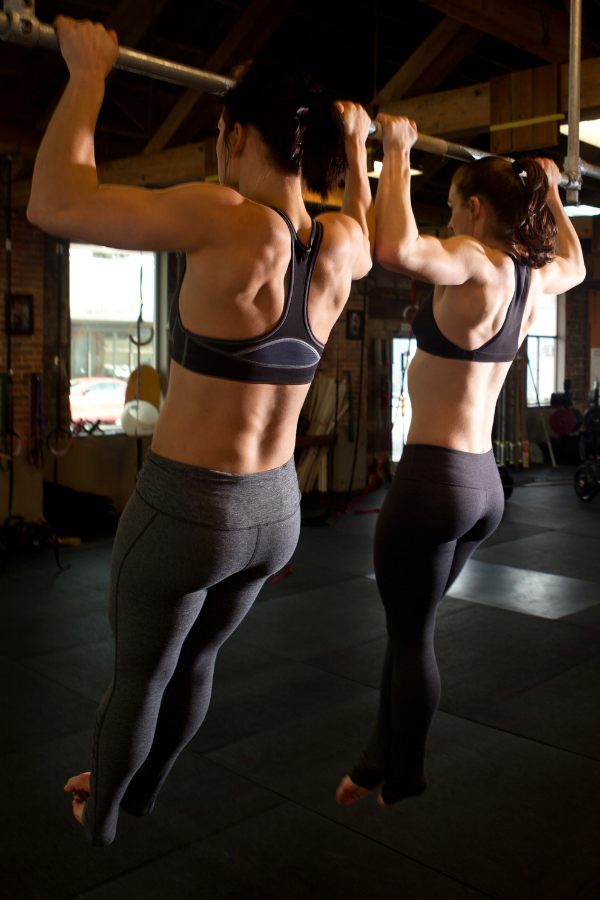
Joining a Community
Joining a fitness community can provide support, motivation, and accountability. Whether it's an online group, a gym class, or a workout buddy, having a support system can make a significant difference in your fitness journey.
Benefits of a Fitness Community
Motivation
Surrounding yourself with like-minded individuals can help keep you motivated and committed to your fitness goals. It makes you push harder when others around you are doing the same!
Accountability
Having someone to check in with can help you stay on track and be consistent with your workouts.
Support
A fitness community can provide encouragement, advice, and support during challenging times.
Fun
Working out SHOULD BE fun!! So choosing to work out with others can make exercise more enjoyable and fun.
Conclusion
By following this comprehensive guide, you'll be well on your way to mastering muscles in the back to workout! Through building a back that's not only strong but also beautiful and functional.
A strong back is the foundation of a balanced and powerful physique. By incorporating these advanced exercises, techniques, and tools like resistance bands into your back routine, you can continue to build strength, muscle mass, and definition.
Don't forget, consistency and proper form are key to achieving your fitness goals. So keep pushing yourself, stay motivated, and enjoy the journey to a stronger, healthier you.
You've got this, babe!
xoxo,
*Disclaimer: The suggestions provided in this blog post are for informational purposes only and should not be considered as a substitute for professional medical advice, diagnosis, or treatment. Always consult with a qualified healthcare provider before making any significant changes to your health and wellness routines. I am not a doctor and the information presented is based on research and personal experience. Individual results may vary, and any actions taken based on the information in this blog post are done at your own risk. It's essential to consult a healthcare expert for personalized guidance tailored to your specific health needs and circumstances. Your health and well-being should always be a top priority, and professional medical guidance is crucial for making informed decisions about your health.




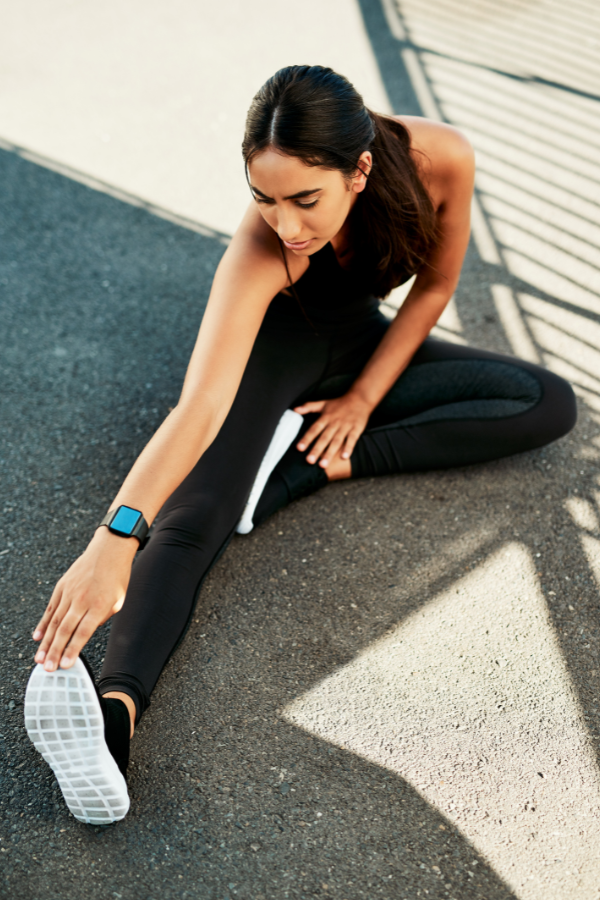


Leave a Reply